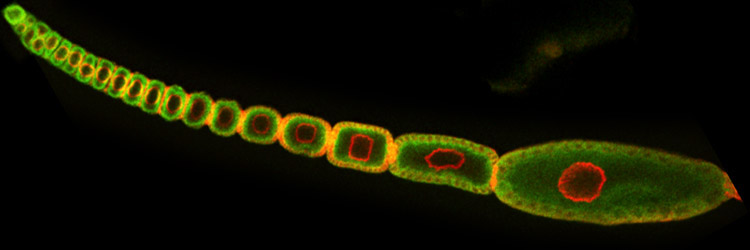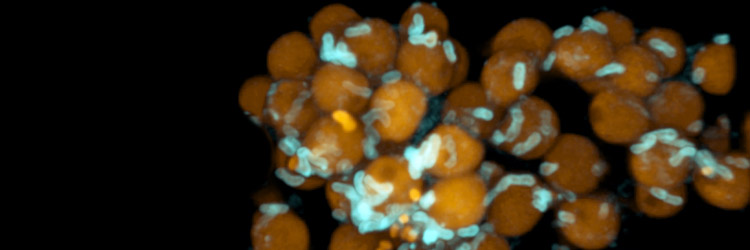 |
The Sullivan Lab, MCD Biology, UCSC |




| ||
Sullivan Lab Research Summary for Non-scientists Looking at a living cell under the microscope is analogous to observing a city from above. In both instances, one is immediately struck by the tremendous movement. At first glance, the movement may appear random, but closer inspection reveals a series of precisely orchestrated events. In the city, movement is guided by streets and sidewalks; while in the cell, the cytoskeleton plays a key role in the distribution and organization of cellular components. One important difference between city streets and the cytoskeleton is that the latter is highly dynamic and constantly reorganizing. Understanding the mechanisms of cytoskeletal dynamics and how they are coordinated with other cellular events is a key area of biomedical research Our laboratory uses the Drosophila (fruit-fly) embryo to address these issues. We have chosen this experimental system, because it is amenable to a wide variety of approaches, including molecular genetics, biochemistry, and cell biology. Recently developed fluorescent technologies have made it possible to study these processes in living cells. We apply these approaches to address three fundamental areas of investigation:
[Back] [Sullivan Research Main Page ] |
||
|
|